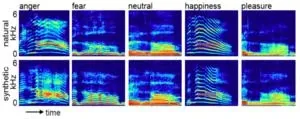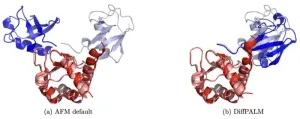(Press-News.org) Nearly all the neural networks that power modern artificial intelligence tools such as ChatGPT are based on a 1960s-era computational model of a living neuron. A new model developed at the Flatiron Institute’s Center for Computational Neuroscience (CCN) suggests that this decades-old approximation doesn’t capture all the computational abilities that real neurons possess and that this older model is potentially holding back AI development.
The new model developed at CCN posits that individual neurons exert more control over their surroundings than previously thought. The updated neuron model could ultimately lead to more powerful artificial neural networks that better capture the powers of our brains, the model developers say. The researchers present the revolutionary model in a paper published the week of June 24 in the journal Proceedings of the National Academy of Sciences.
“Neuroscience has advanced quite a bit in these past 60 years, and we now recognize that previous models of neurons are rather rudimentary,” says Dmitri Chklovskii, a group leader at the CCN and senior author of the new paper. “A neuron is a much more complex device — and much smarter — than this overly simplified model.”
Artificial neural networks aim to mimic the way in which the human brain processes information and makes decisions, albeit in a much more simplified manner. These networks are built of ordered layers of ‘nodes’ based on the 1960s neuron model. The network starts with an input layer of nodes that receives information, then has middle layers of nodes that process the information, and then ends with an output layer of nodes that sends out the results.
Typically, a node will only pass information to the next layer if the total input it receives from the previous layer’s nodes exceeds a certain threshold. When current artificial neural networks are trained, information goes through a node in only one direction, and there’s no way for nodes to influence the information they receive from nodes earlier in the chain.
In contrast, the newly published model treats neurons as tiny ‘controllers,’ an engineering term for devices that can influence their surroundings based on information gathered about those surroundings. Not merely passive relays of input, our brain cells may actually work to control the state of their fellow neurons.
Chklovskii believes that this more realistic model of a neuron-as-controller could be a significant step toward improving the performance and efficiency of many machine learning applications.
“Although AI’s achievements are very impressive, there are still many problems,” he says. “The current applications can give you wrong answers, or hallucinate, and training them requires a lot of energy; they’re very expensive. There are all these problems that the human brain seems to avoid. If we were to understand how the brain actually does this, we could build better AI.”
The neuron-as-controller model was inspired by what scientists do understand about large-scale circuits in the brain made up of many neurons. Most brain circuits are thought to be organized into feedback loops, where cells later in the processing chain influence what happens earlier in the chain. Much like a thermostat maintaining the temperature of a house or building, brain circuits need to keep themselves stable to avoid overwhelming the body’s system with activity.
Chklovskii says it was not entirely intuitive that this kind of feedback control could also be realized by an individual brain cell. He and his colleagues realized that a novel form of control, known as direct data-driven control, is straightforward and efficient enough to be biologically plausible as taking place in individual cells.
“People thought of the brain as a whole or even parts of the brain as being a controller, but no one suggested that a single neuron could do that,” Chklovskii says. “Control is a computationally intensive task. It’s hard to think of a neuron as having enough computational capacity.”
Viewing neurons as mini-controllers also explains several previously unexplained biological phenomena, Chklovskii says. For example, it’s long been appreciated that there’s a lot of noise in the brain, and the purpose of this biological randomness has been debated, but the CCN team found through their modeling that certain types of noise could actually enhance neurons’ performance.
More specifically, at junctions where one neuron connects to another (called ‘synapses’), there are often instances where a neuron transmits an electrical signal but the downstream coupled neuron does not get the message. Whether and when the downstream neuron receives a synaptic signal seems to be governed largely by chance. While other scientists have speculated that such randomness was just the nature of small biological systems and not important to neuron behavior, the Flatiron team found that adding noise to their model neuron allowed it to adapt to a constantly changing environment. The randomness appears to be important in replicating how real neurons function, the team found.
Chklovskii next plans to analyze types of neurons that don’t fit their new model. For example, neurons in the retina receive direct inputs from the visual environment. These neurons may not be able to control their inputs the way neurons deeper in the brain can, but they might use some of the same principles Chklovskii and his team identified: namely, these neurons might be able to predict their inputs, even if they can’t influence them.
“Control and prediction are actually very related,” Chklovskii says. “You cannot control efficiently without predicting the impact of your actions in the world.”
ABOUT THE FLATIRON INSTITUTE
The Flatiron Institute is the research division of the Simons Foundation. The institute's mission is to advance scientific research through computational methods, including data analysis, theory, modeling and simulation. The institute's Center for Computational Neuroscience develops models, principles and conceptual frameworks that deepen our knowledge of brain function — both in health and in disease.
END
New computational model of real neurons could lead to better AI
The new model developed by Flatiron Institute researchers proposes that biological neurons have more control over their surroundings than previously thought, something that could be replicated in the artificial neural networks used in machine learning
2024-06-24
ELSE PRESS RELEASES FROM THIS DATE:
AI matches protein interaction partners
2024-06-24
Proteins are the building blocks of life, involved in virtually every biological process. Understanding how proteins interact with each other is crucial for deciphering the complexities of cellular functions, and has significant implications for drug development and the treatment of diseases.
However, predicting which proteins bind together has been a challenging aspect of computational biology, primarily due to the vast diversity and complexity of protein structures. But a new study from the group of Anne-Florence Bitbol at EPFL might now change all that.
The team of scientists, ...
Navigating the labyrinth: How AI tackles complex data sampling
2024-06-24
The world of artificial intelligence (AI) has recently seen significant advancements in generative models, a type of machine-learning algorithms that “learn” patterns from set of data in order to generate new, similar sets of data. Generative models are often used for things like drawing images and natural language generation – a famous example are the models used to develop chatGPT.
Generative models have had remarkable success in various applications, from image and video generation to composing music and to language modeling. The problem ...
Hydrothermal vents on seafloors of ‘ocean worlds’ could support life, new study says
2024-06-24
We’ve all seen the surreal footage in nature documentaries showing hydrothermal vents on the frigid ocean floor—bellowing black plumes of super-hot water—and the life forms that cling to them. Now, a new study by UC Santa Cruz researchers suggests that lower-temperature vents, which are common across Earth's seafloor, may help to create life-supporting conditions on "ocean worlds" in our solar system.
Ocean worlds are planets and moons that have—or had in the past—a liquid ocean, often under an icy shell or within their rocky interior. In Earth's solar system, several of Jupiter's and Saturn's moons are ocean worlds, and ...
New USF study: Mindfulness and managing emotions lead to better sleep
2024-06-24
Media Contact:
John Dudley
(814) 490-3290 (cell)
jjdudley@usf.edu
TAMPA, Fla. (June 24, 2024) – Mindfulness – focusing on the present moment – can improve sleep, reduce stress and improve overall health. A new University of South Florida-led study helps explain why.
Researchers studied 144 nurses over two weeks to see how well they could stay focused on the present and how often they fixated on negative thoughts. The nurses completed surveys three times a day and reported their sleep quality the following morning.
The findings shed light on how mindfulness relates to emotion ...
JACC to serve cardiovascular community, shape future under new editor
2024-06-24
The first issue of JACC, the flagship journal of the American College of Cardiology, under new Editor-in-Chief Harlan M. Krumholz, MD, SM, FACC, publishes today, ushering in a new era of one of the world’s leading scholarly journals.
“I envision JACC, with all its strengths, as a transformative platform for building community, elevating strong science, influencing clinical practice, supporting career development, and improving patient outcomes.” Krumholz said in his Editor’s Page. “JACC and its group of journals can play a pivotal role in serving our community and shaping the future.”
Under his editorship, JACC will be guided by ...
Revived technology used to count individual photons from distant galaxies
2024-06-24
Using an instrument on the 4.1-meter Southern Astrophysical Research Telescope, researchers obtained the first astronomical spectrum using skipper charge-coupled devices (CCDs).
The results were presented on June 16 at the Society of Photo-Optical Instrumentation Engineers Astronomical Telescopes + Instrumentation meeting in Japan by Edgar Marrufo Villalpando, a physics PhD candidate at the University of Chicago and a Fermilab DOE Graduate Instrumentation Research Award Fellow.
“This is a major milestone for skipper-CCD technology,” said Alex Drlica-Wagner, a cosmologist at the U.S. Department of Energy’s Fermi ...
U of T researchers develop RNA-targeting technology for precisely manipulating parts of human genes
2024-06-24
Researchers at the University of Toronto have harnessed a bacterial immune defense system, known as CRISPR, to efficiently and precisely control the process of RNA splicing.
The technology opens the door to new applications, including systematically interrogating the functions of parts of genes and correcting splicing deficiencies that underlie numerous diseases and disorders.
“Almost all human genes produce RNA transcripts that undergo the process of splicing, whereby coding segments, called exons, are joined together and non-coding segments, called introns, are removed and typically degraded,” said Jack Daiyang Li, first author on the study and PhD student ...
NexusXp™ – SLAS’s new interactive pavilion at SLAS2025 will showcase automation integration and collaboration
2024-06-24
Oak Brook, IL – The Society for Laboratory Automation and Screening (SLAS) will launch NexusXp, its new interactive pavilion at SLAS2025 to showcase collaborative and integrated lab automation scenarios. NexusXp combines Nexus, the Latin word for link or connection where multiple elements meet, with the modern “Xp” to signify the “Xperience” of making that critical link or connection. Through this new pavilion, SLAS will demonstrate how automation integration transforms research and enables scientific breakthroughs.
“NexusXp is an exclusive event or attendee ...
Engineers developing atom-thick material for efficient, ultrafast, light-based electronics
2024-06-24
AMES, Iowa – A Google Cloud video takes you inside a company data center in
southwest Iowa’s Council Bluffs.
There you are, in the middle of a long, industrial corridor. You slowly move past rack after rack after rack of the computer servers that are, Google says, “helping to keep the internet humming 24/7.”
Part of that hum is the power that keeps those data centers up and running.
“Think about when you use your computer,” said Matthew ...
Study reveals same genes that can drive cancer also guide neural-circuit growth
2024-06-24
LAWRENCE — Many people are familiar with oncogenes — genes long known to be involved in cancers in humans, such as the gene “Src.”
What’s less widely understood is that oncogenes didn’t evolve just to cause cancer in species, but rather to control events of normal growth and differentiation.
“As an organism grows from a single fertilized egg to form all the different tissue types, these oncogenes, including Src, evolved to control these normal events,” said Erik Lundquist, professor of molecular ...
LAST 30 PRESS RELEASES:
Strategic river sensors could have forewarned of Texas Camp flood disaster
Drone sampling of whale breath reveals first evidence of potentially deadly virus in Arctic
Roman soldiers defending Hadrian’s Wall infected by parasites, study finds
Pinochet’s prisoners were tormented with music but still found solace in it, a new book reveals
Fertility remains high in rural Tanzania despite access to family planning
AI-assisted device can improve autism care access
Kinetic careers
Uncovering how parasitic plants avoid attacking themselves to improve crop resistance
Nanoparticle vaccine strategy could protect against Ebola and other deadly filoviruses
Study finds brain care score can predict risk of stroke across racial groups
Key lung immune cells can intensify allergic reactions
Do hormones explain why women experience more gut pain?
New materials conduct ions in solids as easily as in liquids
Breakthrough of the Year: Renewable energy begins to eclipse fossil fuel-based sources
LLM use is reshaping scientific enterprise by increasing output, reducing quality and more
Introducing LightGen, a chip for ultra-fast, ultra-efficient generative AI
Astronomers see fireworks from violent collisions around nearby star
ACC/AHA issue new guideline on managing congenital heart disease in adults
Cosmic crash caught on camera
Is talented youth nurtured the wrong way? New study shows: top performers develop differently than assumed
Ants: An untapped resource in the development of antibiotics?
Archaeologists use AI to create prehistoric video game
Mitochondria migrate toward the cell membrane in response to high glucose levels
Tiny viral switch offers hope against drug-resistant bacteria
Most parents aware of early peanut introduction guidelines, but confused about details
HPV vaccine can protect against severe lesions of the vulva and vagina
Virtual care provision and emergency department use among children and youth
Quadrivalent HPV vaccine and high-grade vulvovaginal lesions
Insights into dry eyes gained from stem cell-derived tear glands
Researchers identify 166 human pluripotent stem cell lines available for use in clinical applications
[Press-News.org] New computational model of real neurons could lead to better AIThe new model developed by Flatiron Institute researchers proposes that biological neurons have more control over their surroundings than previously thought, something that could be replicated in the artificial neural networks used in machine learning









